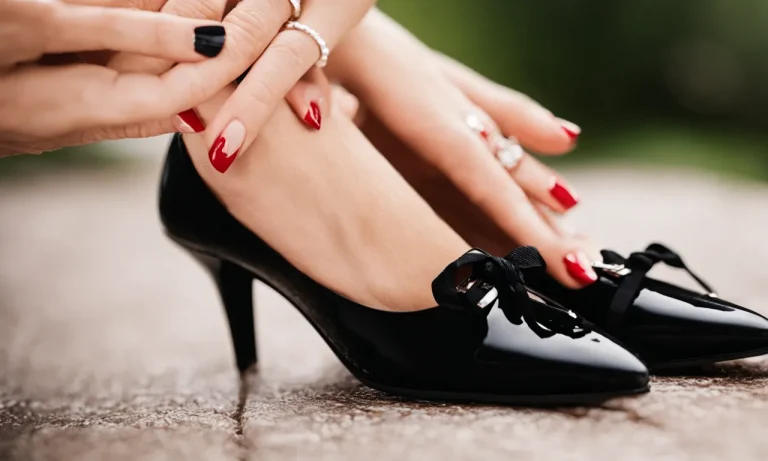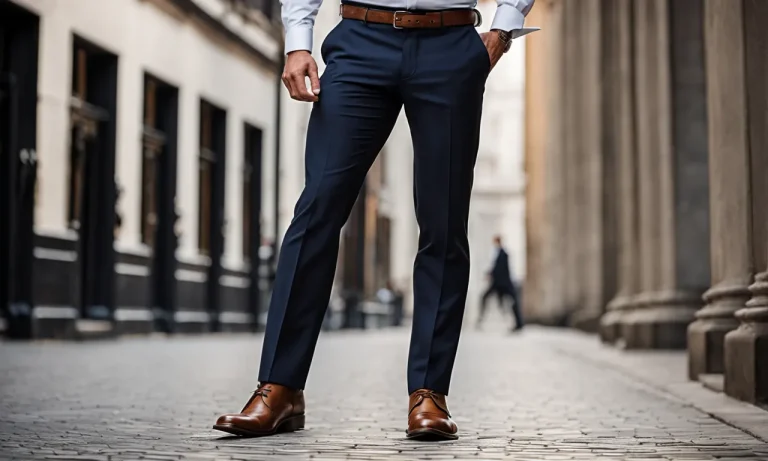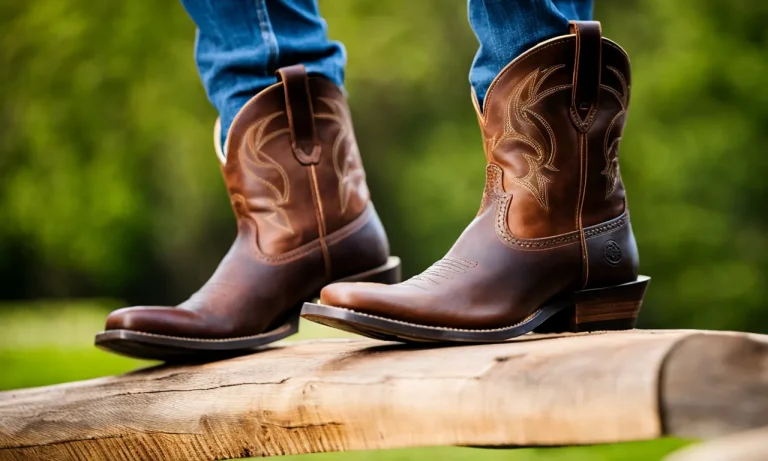Running is one of the most popular and accessible forms of exercise. With running’s rising popularity, the running shoe market has exploded with countless styles and varieties to choose from. But with so many options, how do you know which running shoe is right for you?
If you’re short on time, here’s a quick answer to your question: A neutral running shoe is designed for runners with a normal arch and normal pronation (inward foot rolling). It offers cushioning and flexibility without any stability features.
In this comprehensive guide, we’ll cover everything you need to know about neutral running shoes. We’ll explain what a neutral runner is, the characteristics and benefits of a neutral shoe, how to select the right neutral shoe for your foot type and running needs, and provide recommendations on some of the top-rated neutral running shoes on the market today.
What is a Neutral Runner?
When it comes to running shoes, understanding your running style is crucial in finding the right fit. One important factor to consider is whether you are a neutral runner or not. A neutral runner is someone who has a normal arch and normal pronation.
Normal Arch
A normal arch is characterized by a moderate curve in the middle of the foot. When a neutral runner is standing, their arch does not excessively collapse inward (overpronation) or stay rigid (underpronation). This balanced arch provides a stable foundation for running, reducing the risk of injuries.
It is important for neutral runners to choose running shoes that provide the right amount of support and cushioning. Shoes with a neutral design are typically recommended for individuals with normal arches.
These shoes offer a good balance between stability and flexibility, allowing the foot to move naturally without excessive pronation or supination.
Normal Pronation
Pronation refers to the natural rolling motion of the foot during the running gait cycle. Normal pronation occurs when the foot strikes the ground and rolls inward slightly, distributing the impact evenly.
Neutral runners have a normal pronation pattern, where the foot neither excessively rolls inward (overpronation) nor rolls outward (underpronation).
Neutral running shoes are designed to accommodate the natural pronation of neutral runners. These shoes typically have a medium level of support and cushioning, providing a comfortable and efficient running experience.
They offer a good balance between flexibility and stability, allowing the foot to move naturally without compromising on performance or comfort.
It’s important to note that not all individuals with normal arches and pronation will be comfortable in neutral running shoes. Factors such as foot shape, body weight, and running style can also influence the choice of running shoes.
It is always recommended to consult with a professional running specialist or podiatrist for a proper assessment and personalized shoe recommendation.
For more information on choosing the right running shoes for your specific needs, you can visit websites such as Runners World and Road Runner Sports.
What is Pronation and Why it Matters
Pronation is a natural motion of the foot that occurs when the arch collapses inward and the foot rolls inward during the gait cycle. It is an essential part of the body’s shock absorption mechanism, helping to distribute the forces of impact evenly.
Understanding your pronation type is crucial when choosing the right running shoes, as it can greatly affect your running performance and reduce the risk of injuries.
Overpronation vs underpronation
Overpronation and underpronation (also known as supination) are two common pronation issues that runners may experience. Overpronation occurs when the foot rolls inward excessively, causing the arch to collapse too much.
This can lead to various foot and leg issues, such as plantar fasciitis, shin splints, and knee pain. On the other hand, underpronation happens when the foot doesn’t roll inward enough, resulting in less shock absorption and placing excess stress on the outer edge of the foot.
This can lead to problems like ankle sprains, IT band syndrome, and stress fractures.
Identifying whether you overpronate, underpronate, or have a neutral pronation is essential in finding the right running shoe for your needs. By understanding your pronation type, you can choose a shoe that provides the necessary support and stability to correct any pronation issues and prevent potential injuries.
How to determine your pronation type
There are a few methods you can use to determine your pronation type. One simple way is to observe the wear pattern on your old running shoes. If the wear is primarily on the inner edge of the sole, you likely have overpronation.
Conversely, if the wear is on the outer edge, you might have underpronation. Another method is to perform a wet test. Wet the soles of your feet and then step on a piece of paper or a surface that will show your footprint.
If you see a complete footprint with little to no curve along the inner edge, you likely have overpronation. If you see only the outer edge and the arch is barely visible, you may have underpronation. However, these methods are not foolproof, so it’s best to consult a professional, such as a podiatrist or a knowledgeable running store employee, for a more accurate assessment of your pronation type.
Remember, finding the right running shoe that supports your pronation type can make a significant difference in your comfort, performance, and injury prevention. So, take the time to determine your pronation type and invest in a suitable pair of shoes that will keep you running strong and pain-free!
Characteristics and Benefits of Neutral Running Shoes
Flexibility
One of the key characteristics of neutral running shoes is their flexibility. These shoes are designed to allow for natural foot movement during running. The soles of neutral running shoes are typically more flexible compared to other types of running shoes.
This flexibility enables a smoother and more efficient stride, reducing the risk of strain or injury on the feet and legs.
Cushioning
Neutral running shoes provide ample cushioning to absorb the impact of each step. The midsole of these shoes is often made of materials such as foam or gel, which provide excellent shock absorption. This cushioning helps to reduce the stress on the joints, particularly the knees and ankles, making them ideal for runners who prefer a softer feel underfoot.
Lightweight
Neutral running shoes are typically lightweight, allowing for a more comfortable and effortless running experience. The lighter weight of these shoes helps to reduce fatigue and allows the runner to maintain a faster pace for longer periods.
Additionally, lightweight shoes can enhance agility and responsiveness, enabling quick and nimble movements on the road or trail.
Breathable upper
The upper part of neutral running shoes is often made of breathable materials such as mesh or synthetic fabrics. This design allows for better air circulation, preventing excessive moisture buildup inside the shoe.
By keeping the feet cool and dry, these shoes help to prevent discomfort and reduce the risk of blisters or fungal infections.
Lack of stability features
Unlike stability or motion control shoes, neutral running shoes lack additional stability features such as medial posts or rigid structures. This design allows the foot to move naturally without any interference.
Neutral shoes are suitable for runners with a neutral foot strike or those who do not require additional support or correction for pronation or supination.
Injury prevention
Neutral running shoes can help prevent injuries by promoting a more natural running gait. The combination of flexibility, cushioning, and lightweight design reduces the impact on the body, minimizing the risk of stress fractures, shin splints, or other common running injuries.
However, it’s important to note that choosing the right shoe for your individual needs and running style is crucial for injury prevention.
For more information on choosing the right running shoes, you can visit websites like Runner’s World or Verywell Fit.
How to Choose the Right Neutral Shoe
Choosing the right neutral running shoe is crucial for comfort, performance, and injury prevention. Here are some important factors to consider when selecting your next pair:
Consider your foot type
Understanding your foot type is essential in finding the right neutral shoe. Determine if you have a high arch, normal arch, or low arch. High-arched feet typically require shoes with more cushioning, while low-arched feet may benefit from shoes with added stability.
If you’re unsure about your foot type, you can visit a specialty running store where they can analyze your gait and recommend the appropriate shoe.
Consider your running surfaces
Consider the type of surfaces you’ll be running on. Are you primarily running on roads, trails, or a mix of both? Different shoes are designed for specific surfaces. For road running, look for shoes with good shock absorption and durability.
Trail running shoes, on the other hand, should have excellent traction and stability to handle uneven terrain.
Consider your mileage
Your weekly mileage is another important factor to consider. If you’re a beginner or have lower weekly mileage, a lighter and more flexible shoe may be suitable. However, if you’re an experienced runner or have higher mileage, you may require a shoe with more cushioning and support to protect your feet and joints from the impact of long-distance running.
Try them on
Never underestimate the power of trying on shoes before making a purchase. Different brands and models can fit differently, so it’s crucial to try them on and walk around in them to see how they feel. Consider the width, length, and overall comfort of the shoe.
Don’t be afraid to walk or run in them if the store allows it, as this will give you a better sense of their performance.
Consider brand/model reputation
Lastly, consider the reputation of the brand and model you’re interested in. Look for reviews and feedback from other runners to get an idea of the shoe’s performance and durability. Reputable brands with a long history in the running industry often have reliable and well-tested shoe models.
Remember, choosing the right neutral running shoe is a personal decision. It’s important to find a shoe that feels comfortable, supports your foot type, and meets your specific running needs. By considering these factors, you’ll be well on your way to finding the perfect neutral shoe for your running journey.
Reviews of Top-Rated Neutral Running Shoes
Brooks Ghost
The Brooks Ghost is a highly regarded neutral running shoe that offers exceptional cushioning and a comfortable fit. It is designed for runners who have a normal to high arch and need a shoe that provides a good balance of support and flexibility.
The Ghost features Brooks’ DNA Loft cushioning technology, which provides a plush and responsive ride. It also has a durable outsole that offers excellent traction on various surfaces. According to Runner’s World, the Brooks Ghost is a great choice for long-distance runners looking for a reliable and comfortable shoe.
Asics Gel-Kayano
The Asics Gel-Kayano is another top-rated neutral running shoe that is favored by many runners. It is known for its excellent stability and cushioning, making it a great option for runners who overpronate.
The Gel-Kayano features Asics’ FlyteFoam technology, which provides lightweight and responsive cushioning. It also has a fluid fit upper that adapts to the foot’s movement, providing a secure and comfortable fit.
According to Running Shoes Guru, the Gel-Kayano is a reliable and durable shoe that can handle long distances and intense training sessions.
Saucony Ride ISO
The Saucony Ride ISO is a popular neutral running shoe that offers a smooth and comfortable ride. It features Saucony’s EVERUN cushioning technology, which provides excellent energy return and impact absorption.
The Ride ISO also has a flexible and breathable upper that conforms to the shape of the foot, providing a personalized fit. According to Running World, the Ride ISO is a versatile shoe that is suitable for both daily training runs and long-distance races.
Hoka One One Clifton
The Hoka One One Clifton is a lightweight and highly cushioned neutral running shoe. It is known for its maximalist design, which provides a plush and comfortable ride. The Clifton features Hoka’s Meta-Rocker technology, which promotes a smooth and efficient stride.
It also has a breathable upper that offers a secure and supportive fit. According to Outside Online, the Clifton is a great option for runners who want a shoe that offers a high level of cushioning without sacrificing speed.
New Balance Fresh Foam 1080
The New Balance Fresh Foam 1080 is a neutral running shoe that offers a luxurious and responsive ride. It features New Balance’s Fresh Foam cushioning technology, which provides a soft and comfortable feel underfoot. The 1080 also has a roomy toe box and a breathable upper that offers a secure fit.
According to Runner’s World, the Fresh Foam 1080 is a great choice for runners who prefer a well-cushioned and supportive shoe for their long training runs.
Conclusion
We hope this guide has helped shed light on what exactly a neutral running shoe is and how to select the right one for your unique foot type and running needs. The key is finding a shoe that provides the right blend of cushioning, flexibility, and comfort without unnecessary stability features that could throw off your natural gait.
Keep in mind that getting properly fitted at your local running specialty store is highly recommended. The staff can analyze your pronation type, arch height, running style, and preferences to point you in the right direction.
With the proper pair of neutral running shoes, you’ll be able to rack up the miles in total comfort. Happy running!






